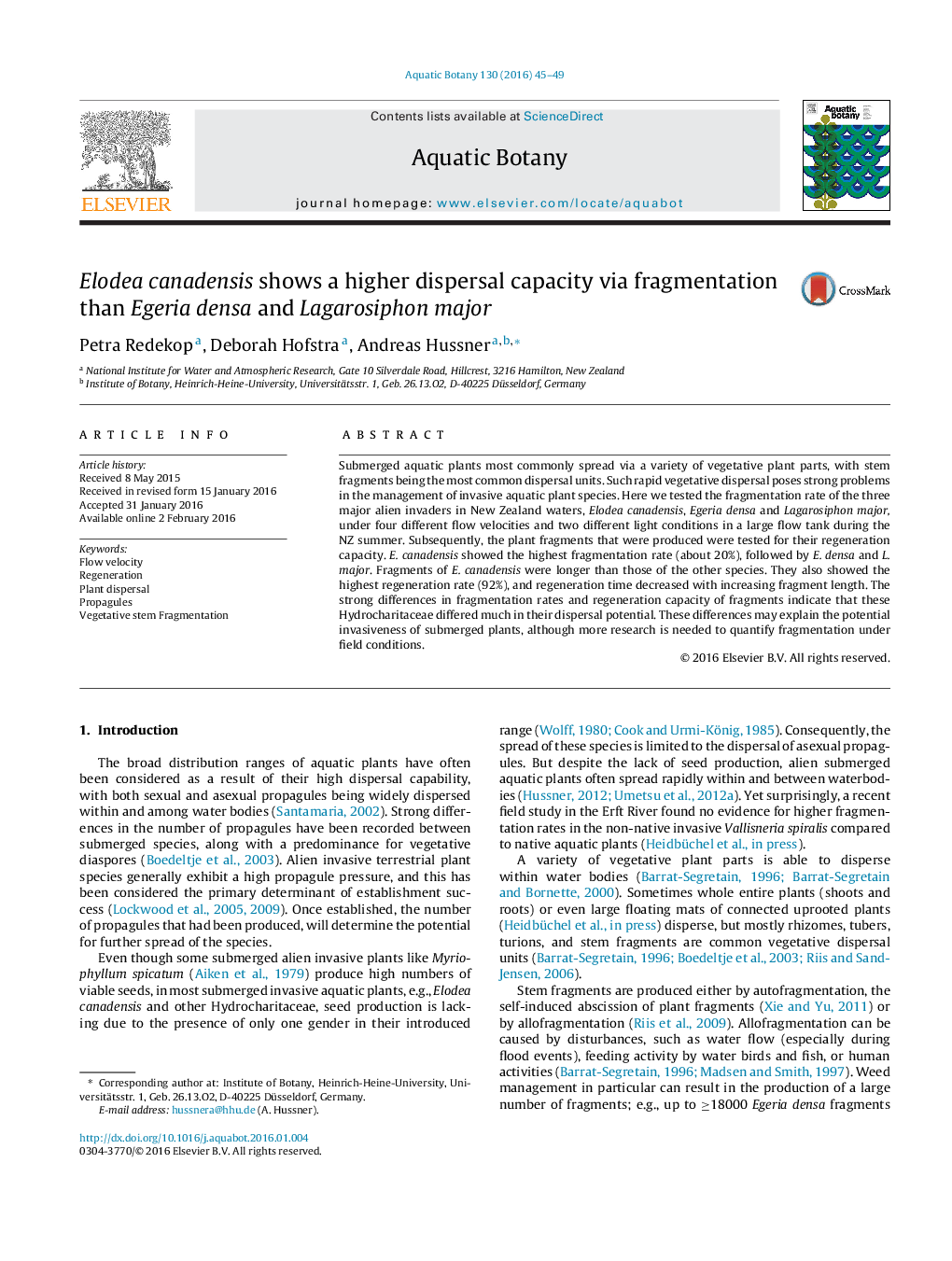| Article ID | Journal | Published Year | Pages | File Type |
|---|---|---|---|---|
| 4527610 | Aquatic Botany | 2016 | 5 Pages |
•We tested fragmentation and regeneration rates of three submerged plant species.•Elodea canadensis produced more fragments than Egeria densa and Lagarosiphon major.•E. canadensis fragments were longer than for E. densa and L. major.•E. canadensis fragments showed highest regeneration capacities.•The regeneration time of fragments decreased with increasing fragment length.
Submerged aquatic plants most commonly spread via a variety of vegetative plant parts, with stem fragments being the most common dispersal units. Such rapid vegetative dispersal poses strong problems in the management of invasive aquatic plant species. Here we tested the fragmentation rate of the three major alien invaders in New Zealand waters, Elodea canadensis, Egeria densa and Lagarosiphon major, under four different flow velocities and two different light conditions in a large flow tank during the NZ summer. Subsequently, the plant fragments that were produced were tested for their regeneration capacity. E. canadensis showed the highest fragmentation rate (about 20%), followed by E. densa and L. major. Fragments of E. canadensis were longer than those of the other species. They also showed the highest regeneration rate (92%), and regeneration time decreased with increasing fragment length. The strong differences in fragmentation rates and regeneration capacity of fragments indicate that these Hydrocharitaceae differed much in their dispersal potential. These differences may explain the potential invasiveness of submerged plants, although more research is needed to quantify fragmentation under field conditions.
